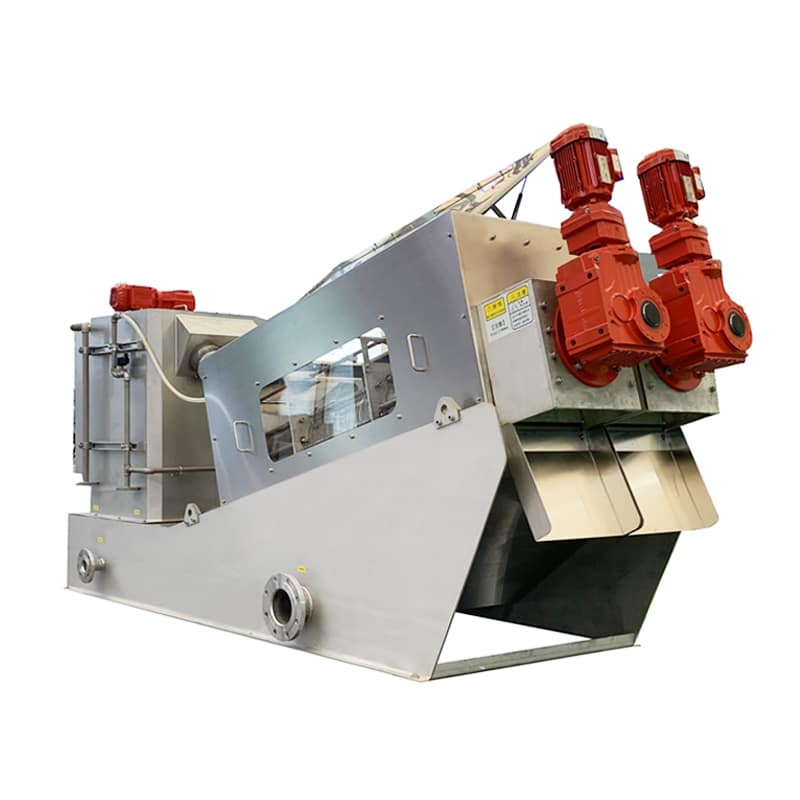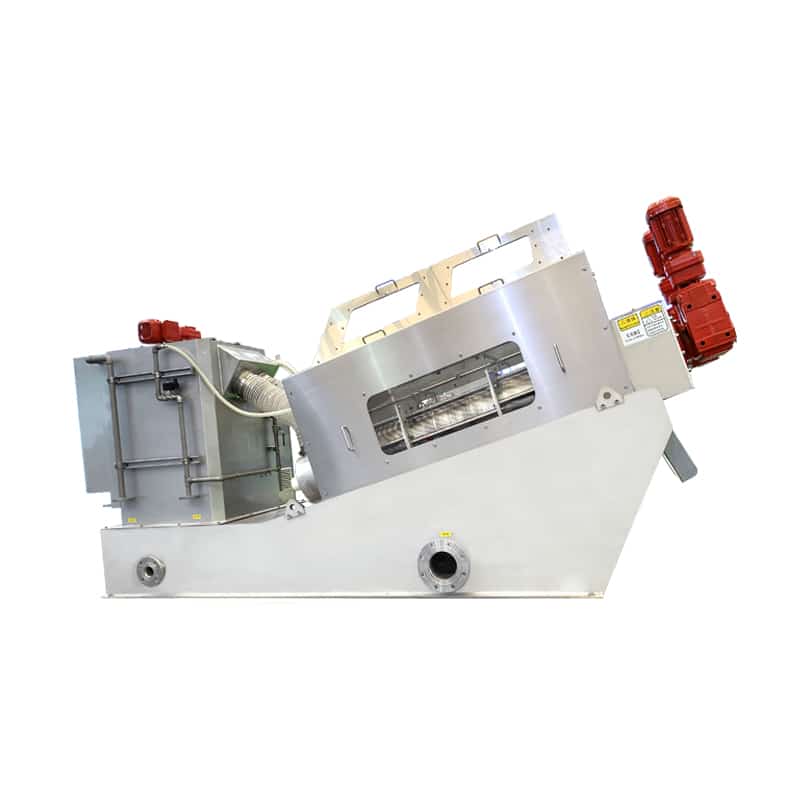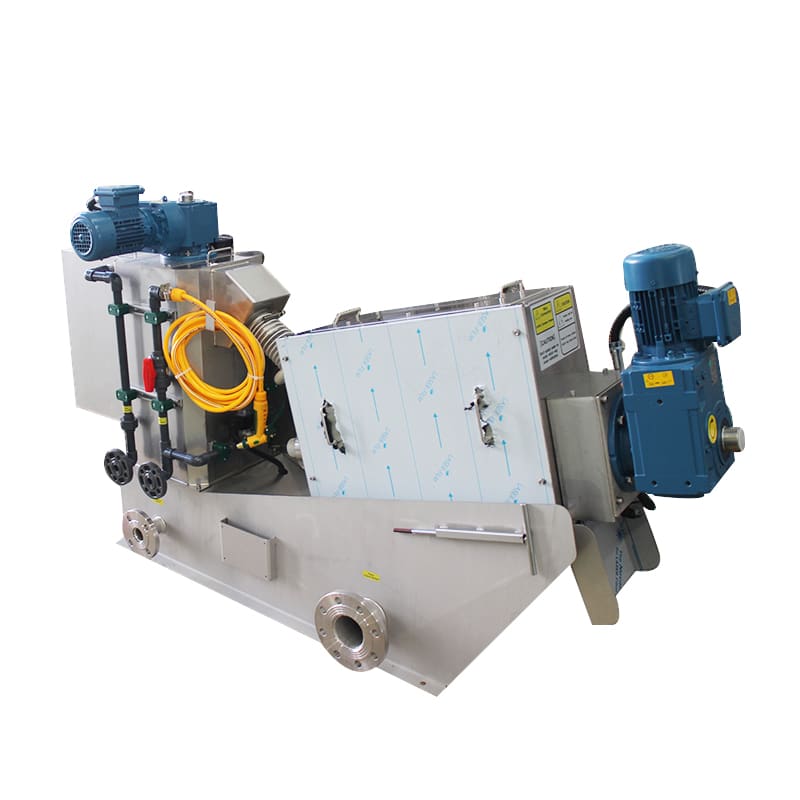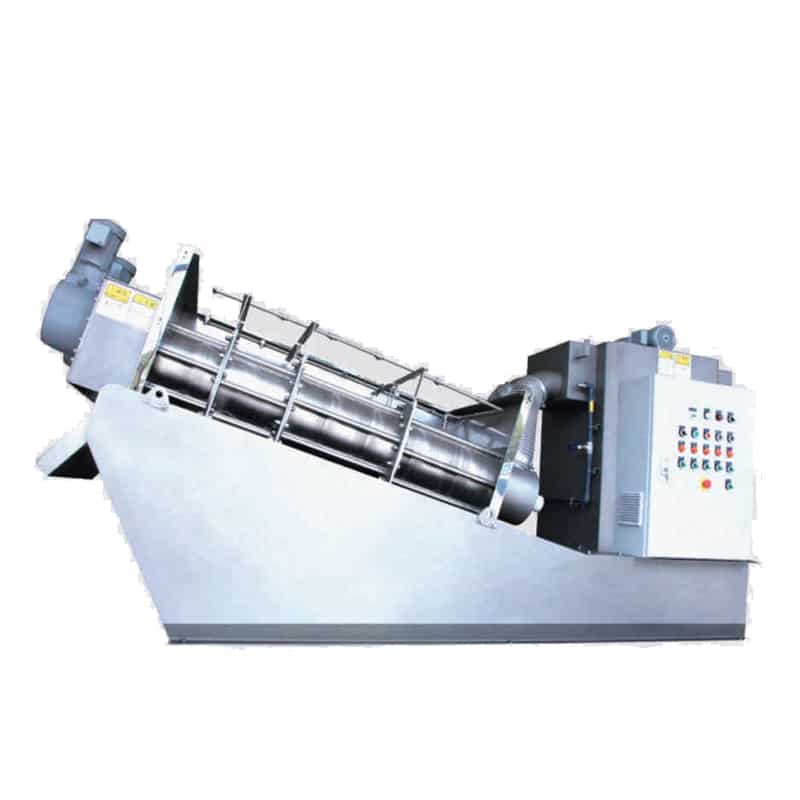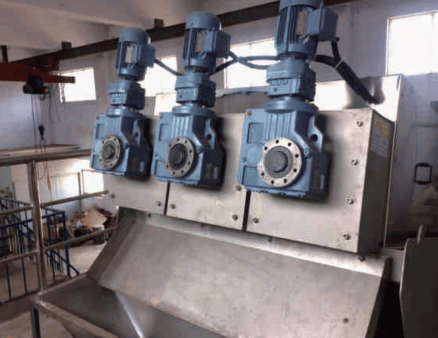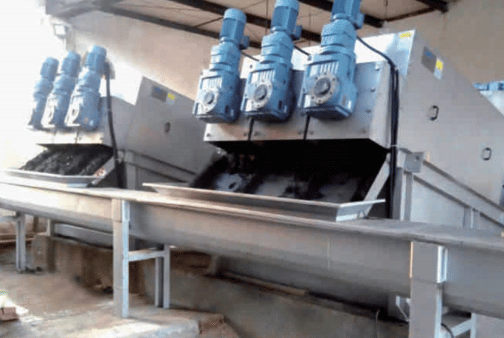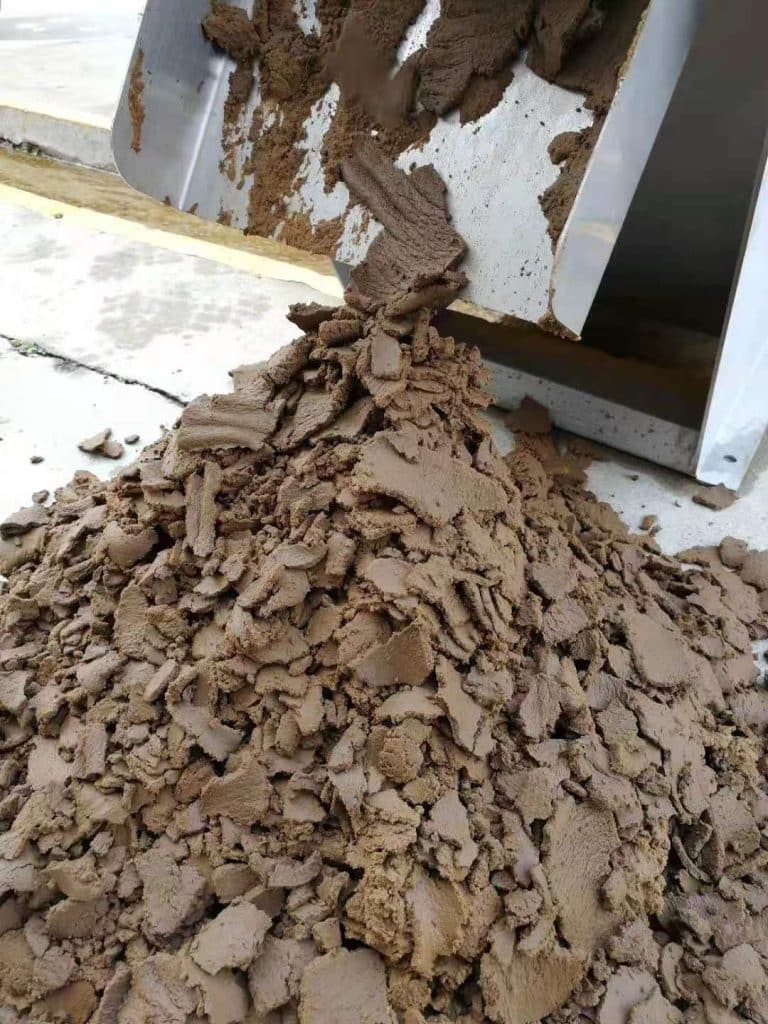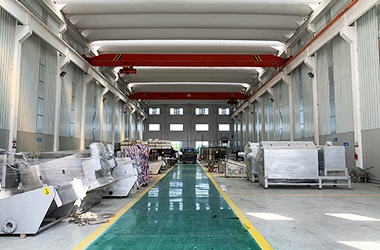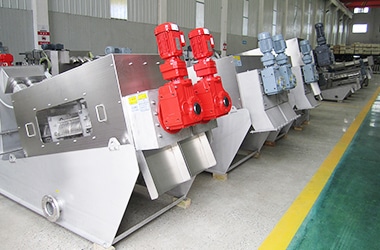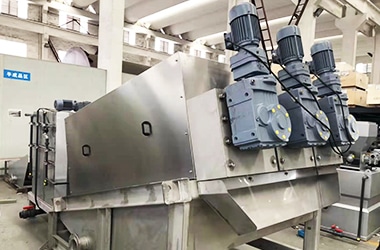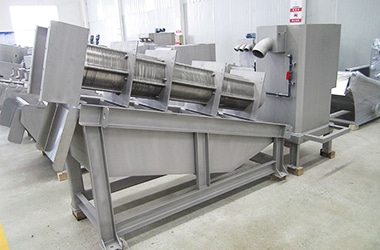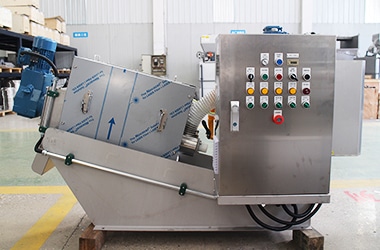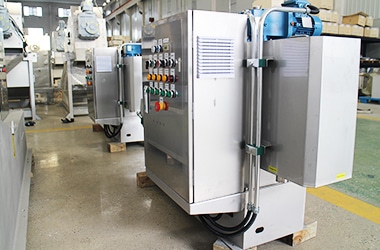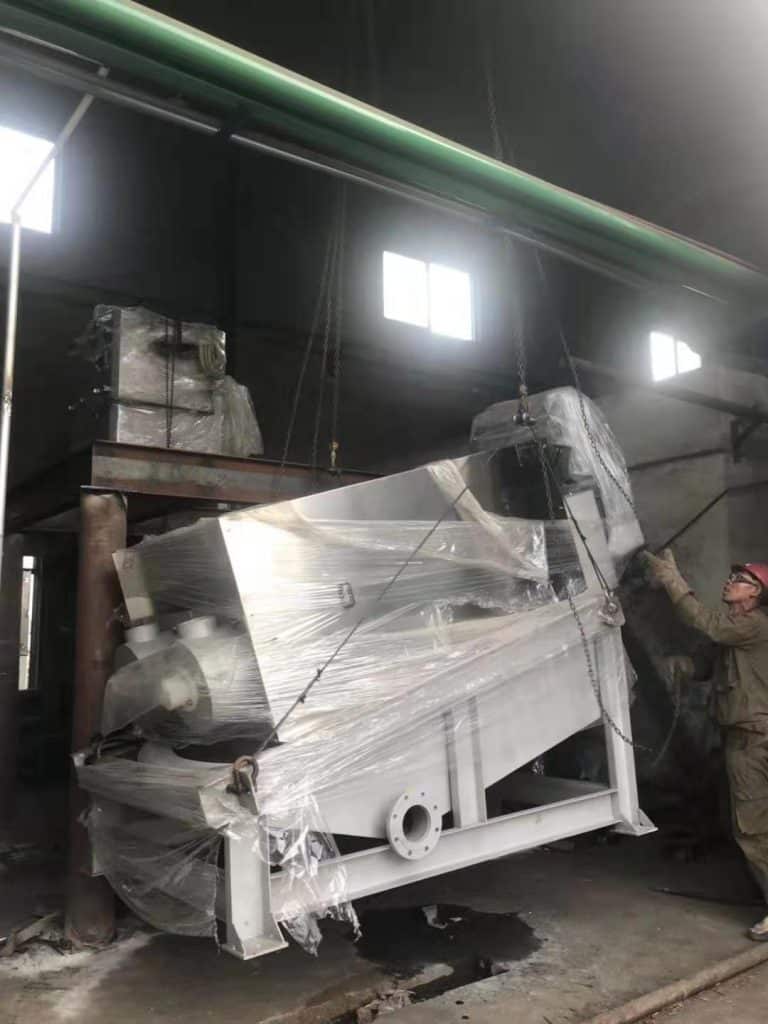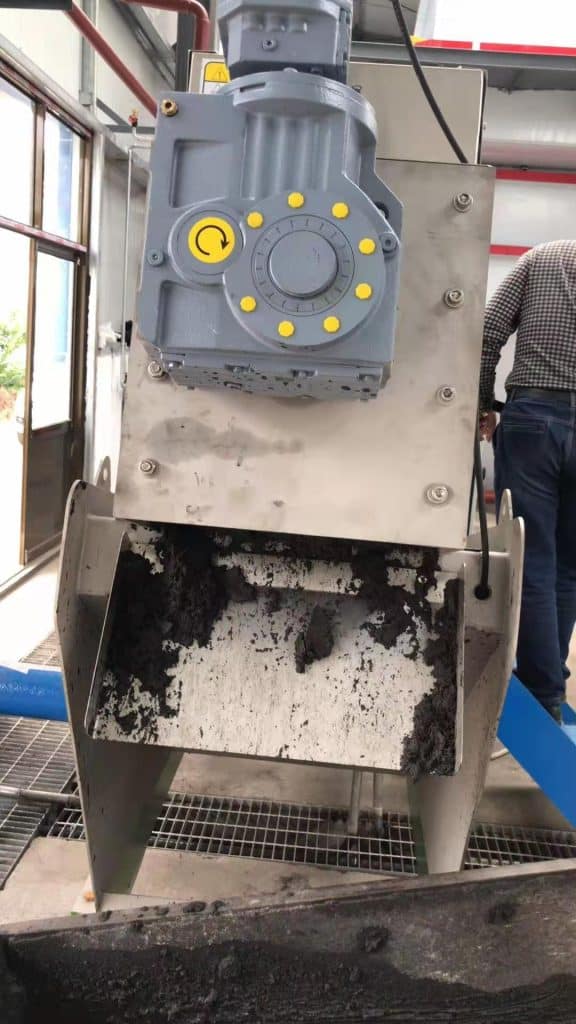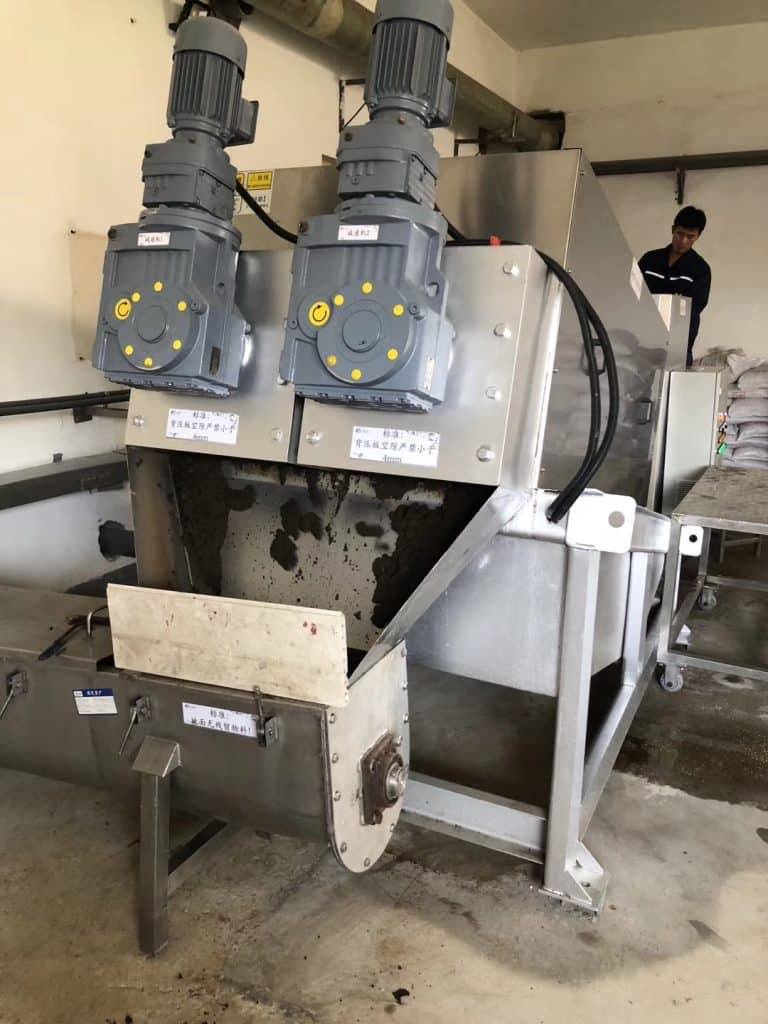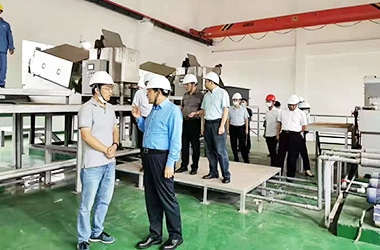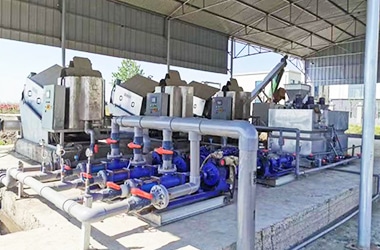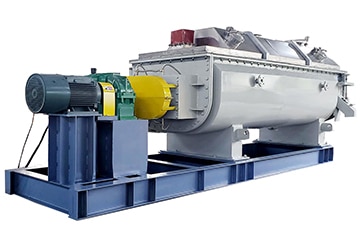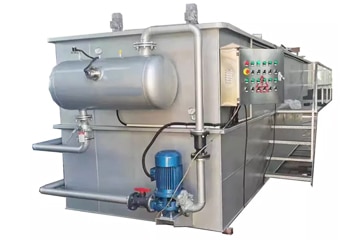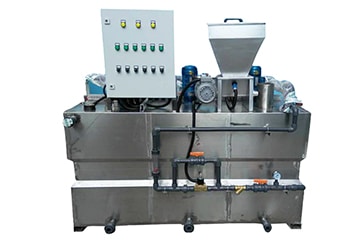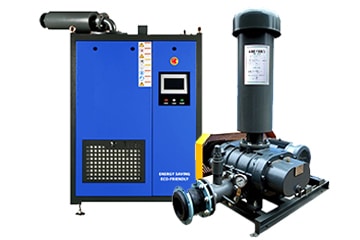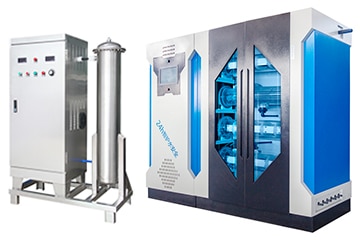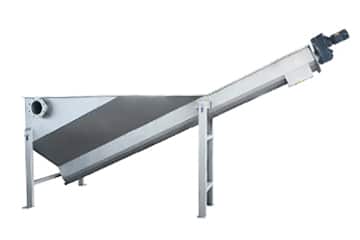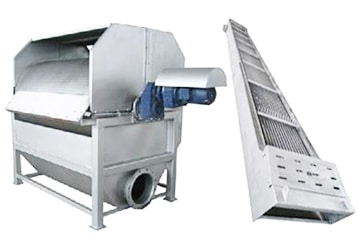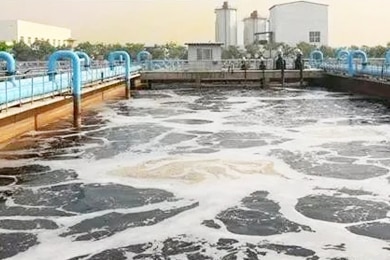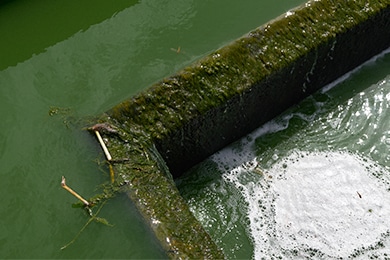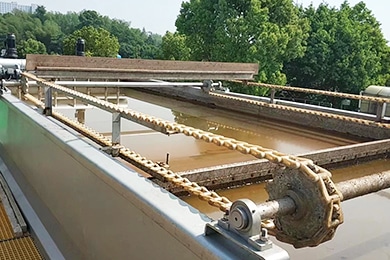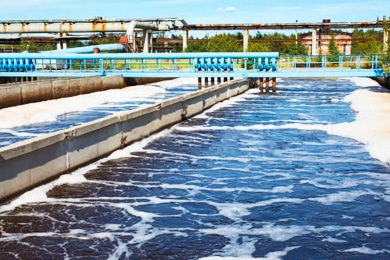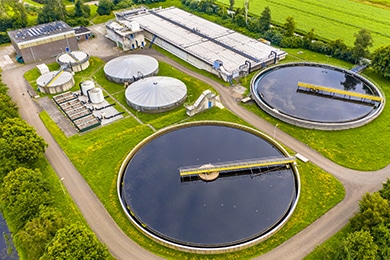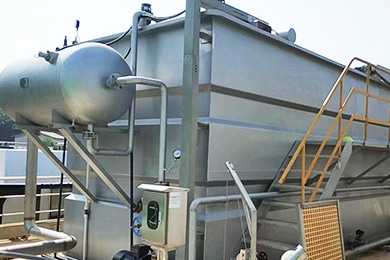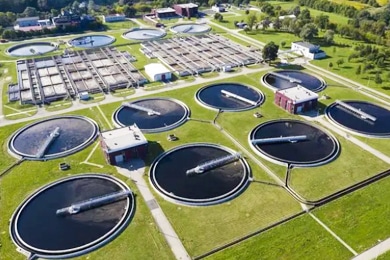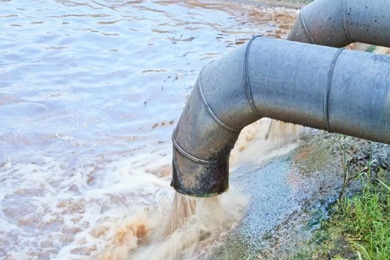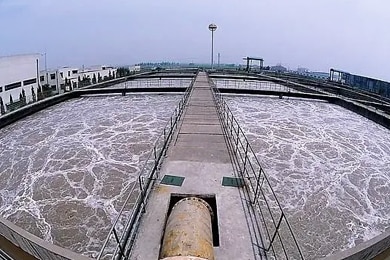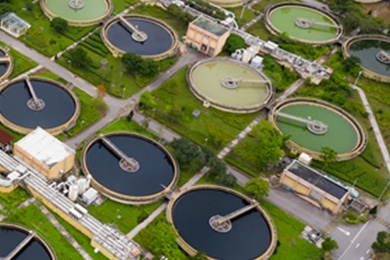Screw Press
Screw press sludge dehydrator, also known as multi disc volute screw press, with its advantages of energy saving, stability and high degree of automation, occupies a place in the sludge dewatering operation of the current sewage treatment industry, and is still rapidly recognized. And it was accepted by the market.
It is a new type of sludge extrusion dehydrating equipment, using the screw extrusion principle, through the screw diameter and pitch changes produced by the strong extrusion pressure, as well as the small gap between the floating ring and the fixed ring, to achieve solid-liquid separation. The dewatering screw press is composed of automatic control cabinet, flocculation modulation box, sludge concentration and dewatering device and liquid collecting tank. The automatic control technology can realize the automatic operation of flocculation, continuously complete the sludge concentration and extrusion, and finally return or discharge the collected filtrate.
Main components and working principle of screw press
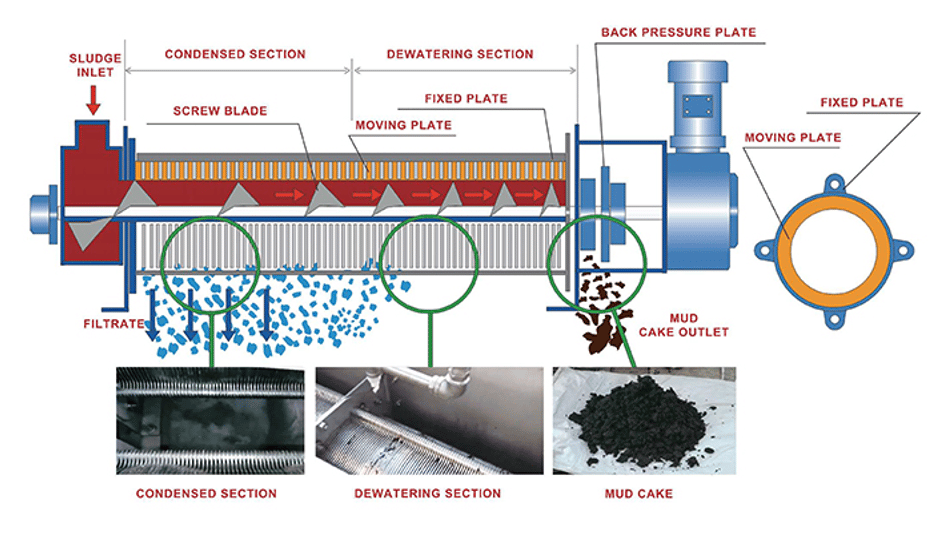
The screw press, with conical screw shaft and cylindrical screen, consists of three treatment zones: an inlet and drive zone, a three-part thickening and dewatering zone and a press zone with a pneumatic counterpressure cone. Cost-effective sludge dewatering with independent sludge treatment.
In the first part of the thickening and dewatering zone, the supernatant is quickly removed by a feed pump through a large free filter surface at low primary pressure. A pressure probe in the feed zone controls the primary pressure, thus ensuring consistent filtrate quality.
In the second part of the screen, the volume of material between the screw threads is reduced by means of a conical screw and the sludge is pressed against the inner surface of the screen, thus dewatering the sludge and decreasing the cake thickness. The screen aperture in this screen section is much smaller.
In the third part of the screen, the remaining water is pressed out of the sludge with minimum cake thickness by a pneumatic counterpressure cone at the press-out. The dewatered sludge is pushed by a screw conveyor over the pressure cone into the discharge chamber. The residence time of the sludge in the screw press as well as the filtering time can be adjusted by adjusting the speed of the screw shaft to meet individual requirements.
The dehydrator is mainly composed of sludge premix module, concentration and dewatering module and electric control system. In the actual working process, the sludge is pumped to the metering tank by an external conveying pump. The sludge after distillation further flows into the flocculation tank, reacts with the flocculant fully under the stirring of the agitator to produce stable alum, and then enters the dewatering screw through the upper part of the flocculation tank. In the dehydrated body, alum flowers concentrate in the concentrated section by gravity and advance to the dehydrated section at the same time. In the process of propulsion, with the filter clearance and pitch gradually reduced, and the back pressure plate blocking effect.
The main body of the screw press dehydrator is a filter device which is superimposed by a plurality of fixed rings and floating rings, and the screw shaft runs through it. The anterior segment is concentrated and the posterior segment is dehydrated. Sludge concentration and dewatering are done in one cylinder. During the spiral rotation, the floating ring and the fixed ring will form a dislocation movement, and the water will be discharged from the gap between the floating ring and the fixed ring. It replaces the traditional filter cloth filtering method with a unique and subtle filter pattern.
Following the principles of force and water in the same direction, thin layer dehydration, appropriate pressure, and prolonged dehydration path, the screw press solves the problems of easy blockage, inability to handle low-concentration sludge and oily sludge, high energy consumption, and complex operation. The dehydration goal of high efficiency and energy saving was achieved.
Features
- Simple operation and maintenance — through a variety of induction control can realize all-weather automatic unattended operation, less routine maintenance items
- Compact design, saving space — screw dewatering water, flocculation mixing tank, electric control cabinet press adopts trinity design, easy installation, small footprint.
- Energy saving, water saving, low noise, low vibration — the core component screw shaft speed is 2~4 RPM, so the power consumption is very low. Its self-cleaning structure can prevent the filter slit clogging, can save a lot of cleaning water. There is almost no noise and vibration when rotating at low speed, ensuring a comfortable and quiet working environment.
- Strong anti-sludge ability, easy to separate and not blocked — self-cleaning structure of screw press dehydrator, not easy to cause filter seam blockage, even if the sludge can be easily handled. Kuosi also has an oil sludge treatment system to recover valuable substances from the sludge and reduce waste emissions. It should be noted that the sludge needs to be flocculated in the mixing tank and then passed through the overflow port into the dewatering water. Therefore, the sludge entering the screw press dehydrator must have certain fluidity.
Configuration
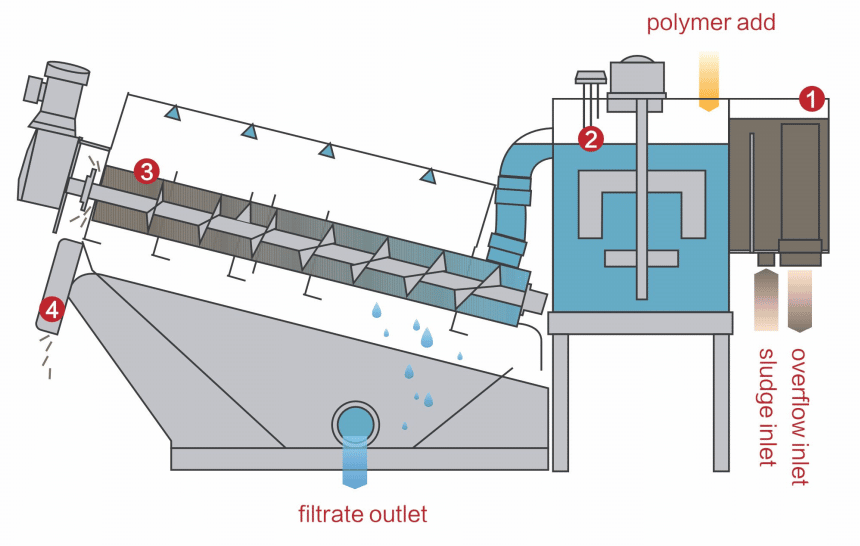
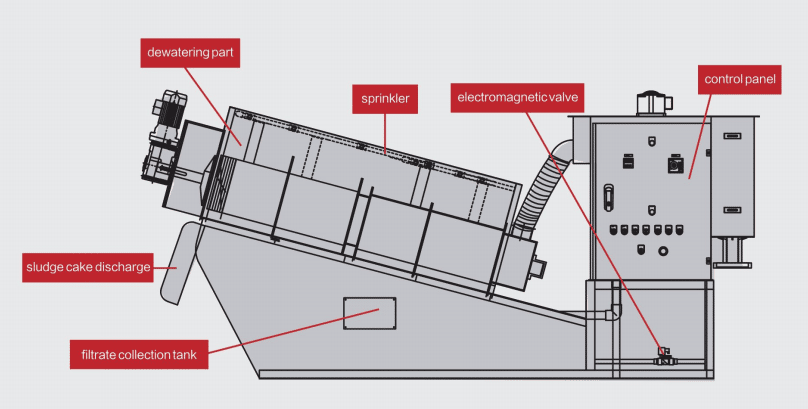
A standard screw press dewatering device configuration generally consists of the following 4 parts.
- Metering tank: Sludge into the metering tank by sludge pump,and the superfluous sludgewill back to the sludge storage tank through return line.
- Flocculation mixer tank: To mix the measured sludge with polymer to form quality alumen ustum.
- Dewatering part: The conditioned sludge flows into the dewatering part from sludge inlet. In the former part of the dewatering part which is called the gravity zone,most of the filtrate are discharged.In the later part which is called the pressure zone, sludges are dehydrated due to the higher and higher pressure on sludge. The dewatering part of sludge concentration machine does not include the pressure zone.
- Sludge discharge: The back pressure plate which setted in the sludge discharge produces the resistance that acts on the opposite direction,thereby futher strengthen the pressure in the body of dewatering part so as to make the sludge more fully dehydrated and discharged from sludge discharge in the form of sludge cake. Sludge thickener discharged the concentrated sludge through the sludge discharge. No back pressure plate is arranged on the outlet side of the sludge thickener.
There is a great demand for screw press dehydrators in the wastewater treatment industry, and the market is also flooded with numerous OEM manufacturers and resale suppliers. Therefore, in the case of limited budget, how to choose a screw press that can meet the requirements of users is particularly important. In addition to the budget, the user needs to know the sludge condition, the expected treatment targets and, most importantly, the configuration of the equipment to be purchased. In the case of asymmetric information between the buyer and the seller, the buyer may wish to understand the configuration of the equipment from the following aspects.
- The premix module and dewatering water of screw press dehydrator are the parts in contact with sludge, according to the supplier’s standard, sludge condition, and different requirements of equipment users. Usually these parts are made of stainless steel. The conventional material on the market is stainless steel 304, followed by stainless steel 316. Better materials have better corrosion resistance, but they also mean higher prices.
- There are multiple washers between the floating ring and the disk support screw, which can prevent the floating ring from generating too much friction with the lead screw in the reciprocating movement for a long time, thus extending the working time of the floating ring. Gasket material can be stainless steel can also be plastic, material difference will greatly affect the price. Depending on the size of the device, there are usually hundreds or thousands of gaskets installed in a single screw pressure machine.
- The power of up and down movement of the floating ring in the process of dehydration comes from the extrusion of the inner screw on the floating ring, so it is necessary to protect the edge of the spiral blade from wear. Whether the screw blade is protected by wear-resistant coating will affect the service life of the screw. Some manufacturers connect all the floating rings together with independent lead screws, and provide power with a power supply different from the main lead screw drive device to prevent the floating ring from contacting the spiral blade, so as to protect the lead screw and floating ring.
- In the choice of motor, reducer and electrical components, manufacturers and users have different preferences for different brands and places of origin. Usually manufacturers will provide solutions according to their own standard configuration, but can also provide customized solutions according to user requirements.
- The electric control cabinet centralized all the operation control of screw press dehydrator. According to the working site temperature, humidity, sunshine and other conditions, the user can choose carbon steel spray or stainless steel control cabinet. For more automated control, users can also ask manufacturers to design PLC control and display designs to detect health.
Screw press or modular dewatering system
As the core equipment of dewatering work, screw press dehydrator needs upstream and downstream conveying equipment to supply sludge and auxiliary slag discharge. At the same time, dehydration is required with the help of chemical agents and dosing equipment. According to customer preference, site limitation and transportation flexibility, KUOSI can provide a multi-in-one integrated skid mounting system, which can install all related equipment on one skid to facilitate transportation and save space. Module design can also be carried out to facilitate flexible layout on site.
- Screw pump — Screw press processing capacity is calculated based on the DS content of sludge. Therefore, the pump feeding the screw press needs to be able to transport a certain amount of sludge according to the actual operation requirements. Screw pump has the characteristics of uniform and stable flow, strong self-priming ability, strong reversibility, and can transport liquid containing solid particles. Used for quantitative transport of various sludge.
- Chemical dosing device – Standard automated powder (polymer) preparation and dispensing systems typically used for liquid chemicals. Provide the most suitable customized solution according to the drug type and user budget. In the choice of dosing metering pump, diaphragm pump or screw pump can also be configured.
- Screw conveyor – Screw conveyor is used to receive the mud cake discharged from the screw press slag discharge port, and then transported to the corresponding storage area. The design of screw conveyor needs to consider the height of the screw stacker slag mouth, the width of the skateboard, the tilt Angle of the equipment installation.
KUOSI is a china manufacturer and supplier of dewatering screw presses. The factory has an extensive product line and strong processing and assembly capabilities to provide total solutions for solid-liquid separation and transportation. Feel free to contact us for a quote on a screw press.

